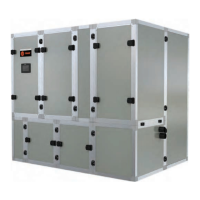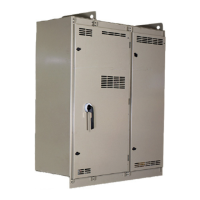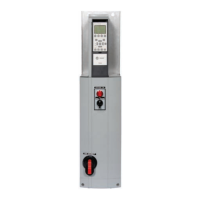36
PKG-SVX027D-EN
discharge line (and condenser liquid line) access port
valves.
If charge is present, continue with piping installation.
If no nitrogen escapes the access valve, leak test the unit
refrigerant system to determine the leak source, and repair.
See Maintenance section, “Refrigerant Leak Test
Procedure,” p. 66. After finding leak, remove test pressure
and repair leak using proper brazing procedures. See
Maintenance section, “Brazing Procedures,” p. 67. Retest
unit(s) to ensure all leaks are repaired. Continue with piping
installation.
Braze suction and liquid lines between evaporator module
and condensing unit cassettes.
See Maintenance section, “Refrigerant Leak Test
Procedure,” p. 66 /“Brazing Procedures,” p. 67.
Figure 21. Braze suction and liquid lines
Interconnecting Piping
Refrigerant piping must be properly sized and applied.
These two factors have a significant effect on both system
performance and reliability.
Install interconnecting piping using proper installation and
brazing procedures.
Work on only one circuit at a time to minimize system
exposure to potentially harmful moisture in the air.
Before installing piping verify compressor oil levels are
near top of sight glass or above.
Note: MSC units (and replacement compressors) ship fully
charged with POE oil from the factory. Scroll
compressors use POE 32 oil, DO NOT substitute.
Capped discharge and liquid line connections are located
near bottom, left side of the condensing unit cassette.
Remove caps with a tube cutter to minimize risk of getting
chips inside piping.
Cleanliness is extremely important during system
installation to minimize residual contaminants, such as
oxidization and scale.
Tightly strap TXV bulbs to horizontal run of each suction
line and insulate. Attach vacuum pump and begin
evacuation as soon as piping installation is complete. This
starts system dehydration and helps prevent POE
compressor oil contamination. This will also indicate large
leaks if vacuum does not hold (below 400 microns and hold
for 2 hours). Complete Leak Test and Evacuation (for
procedures, see “Refrigerant Leak Test Procedure,” p. 66
and “System Evacuation Procedures,” p. 68 in
Maintenance section) before starting “Preliminary
Refrigerant Charging,” p. 36.
Note: Use Type “L” refrigerant grade copper tubing only.
Important: Failure to tighten bulb to suction line, can result
in erratic operation of unit.
NOTICE
Compressor Damage!
POE oil is hygroscopic – it absorbs water directly
from the air. This water is nearly impossible to remove
from the compressor oil and can result in compressor
failures.
To prevent POE oil from absorbing water, the system
should not remain open for longer than necessary.
When open, dry nitrogen should flow through the
piping. Only new oil containers should be used for
service and maintenance. Always use the smallest
container size required for the job requirements.
Always leave the oil container tightly sealed until time
of use. Do not reuse oil that has been opened.
Preliminary Refrigerant Charging
WARNING
Confined Space Hazards!
Failure to follow instructions below could result in
death or serious injury.
Do not work in confined spaces where refrigerant or
other hazardous, toxic, or flammable gas may be
leaking. Refrigerant or other gases could displace
available oxygen to breathe, causing possible
asphyxiation or other serious health risks. Some
gases may be flammable and/or explosive. If a leak in
such spaces is detected, evacuate the area
immediately and contact the proper rescue or
response authority.
Installation - Mechanical

